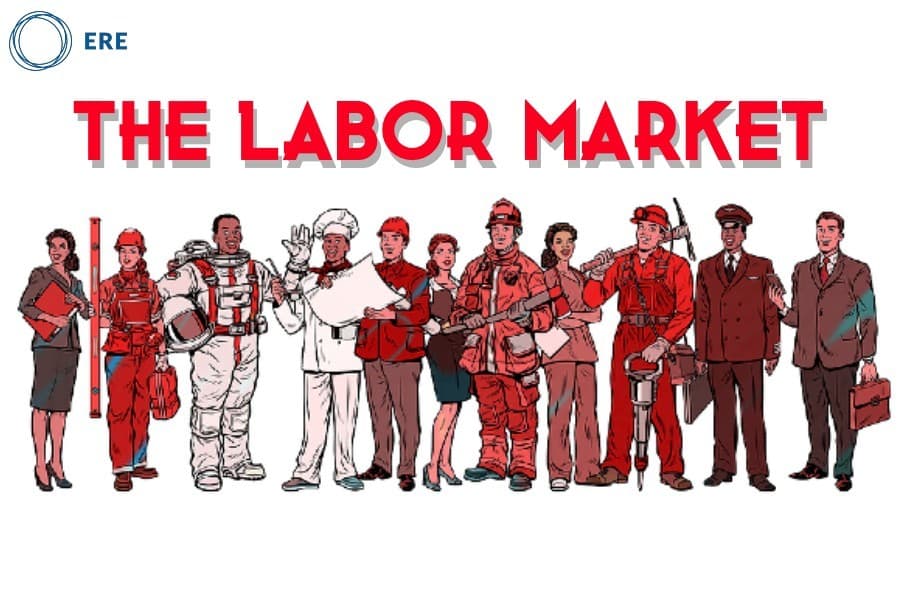The cover of Fortune from October 1, 2001, showed a man, covered in dust, walking away from the rubble of the Twin Towers, with the headline “Up from the ashes.” The picture could just as easily be representative of the labor market today.
One can only hope that 2021 will be a time when the labor market will similarly emerge from the carnage of the previous year. Early signs augur for a better year (it could hardly be worse) for the labor market, but this is far from certain. However, the picture of the labor force that will be available is much clearer.
A Shrinking Labor Force
The labor force has shrunk by 1.8% since February — there are 3 million fewer people (16 years and older) who are working or looking for work. The majority of the loss has been women and minorities leaving the labor force. In September alone, 865,000 women dropped out of the labor force, a rate four times that of men, largely driven by school closures and the lack of child care. Indeed, the loss of child care — estimates indicate that the pandemic could lead to the permanent loss of 4.5 million childcare slots — will make it impossible for many workers, especially women, to return to the labor force, or only allow them to work part-time. Overall, there are 2.2 million fewer women in the labor force now than there were a year earlier.
The pandemic also accelerated the pace of retirements among Baby Boomers (born between 1946 and 1964). Since February, the number of retired Boomers has increased by about 1.1 million, with Hispanic and Asian Americans retiring at higher rates than other groups.
A smaller, less diverse, labor force is likely what the U.S. will have for the next eight to 10 years. The loss of workers with young children and decisions by millions to retire earlier is drastically reducing the number of productive workers.
One key factor leading to earlier retirements is the reduction in life expectancy because of Covid. Life expectancy influences the need to stay employed. By one estimate, life expectancy in the U.S. has reduced by over a year, to about 77 years, with declines in Black and Latino life expectancies of 2 and 3 years, respectively.
Meanwhile, immigration has slowed. Immigrants had swelled the labor force in earlier years, but the pace of immigrants has been steadily slowing since 2010, and is unlikely to rise again. The incoming Biden Administration has already scaled back its pledges on reversing the Trump-era immigration restrictions.
What This Means For Recruiting
Recruiters should expect to find it harder to fill jobs in industries that have a more female dominant workforce, (especially healthcare) and those that are less attractive to younger generations. In the latter category are construction and older technologies. In fact, the construction industry is facing significant labor shortages because most younger workers no longer even consider construction as a viable career option as older workers are retiring.
Additionally, salaries are not expected to increase much in 2021. A third of all employers are lowering their projected pay raises for 2021, and the rest are shifting increases more toward short-term bonuses. However, as more people are vaccinated, they may go on spending sprees for all the things they were unable to spend money on during 2020, making up for all the time not spent in theaters, restaurants and bars. This will cause inflation to spike and put upward pressure on salaries.
The Long Term
A larger labor force may eventually emerge, but it will require the labor-force participation rate to rise. If job growth accelerates, it may bring some of those that have left the labor force back as they see more opportunity.
And because the pandemic has affected low-skilled workers the most, a significant increase in the participation rate will require the creation of more jobs that pay enough to attract such workers. With fewer restaurants, less commuting and travel, and larger numbers of workers who may be permanently working at home, this could take a long-time to happen.
Also, older workers may continue to work if bond yields remain low because financing their retirement becomes uncertain. And continuing options to work from home and flexible work arrangements may draw people back into the labor force, though these jobs typically require a bachelor’s degree or higher, which limits who can qualify for them.
All that said, the odds of the labor force growing are low. The participation rate has been trending down since 2000. The population growth rate has been on a downward trajectory even longer. This combination does not bode well for growth of the labor force. What we have today may be as good as it gets.
